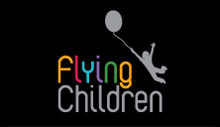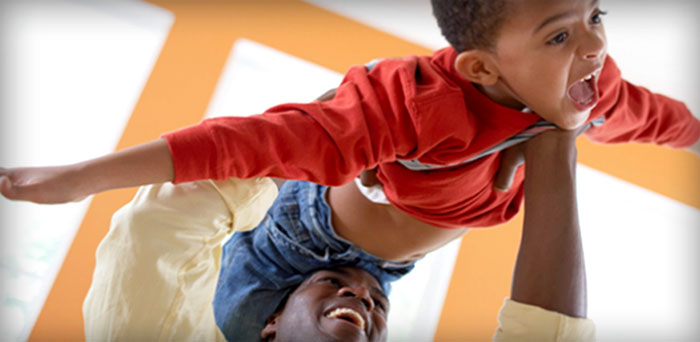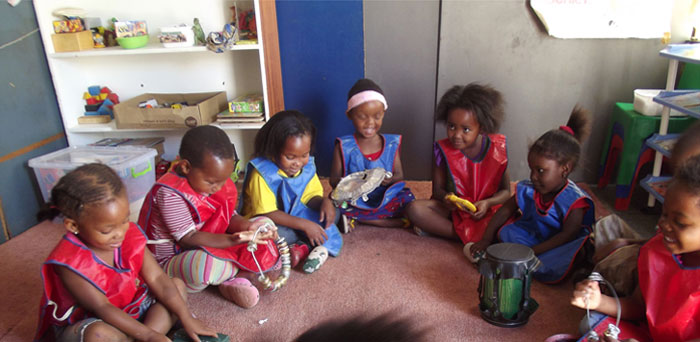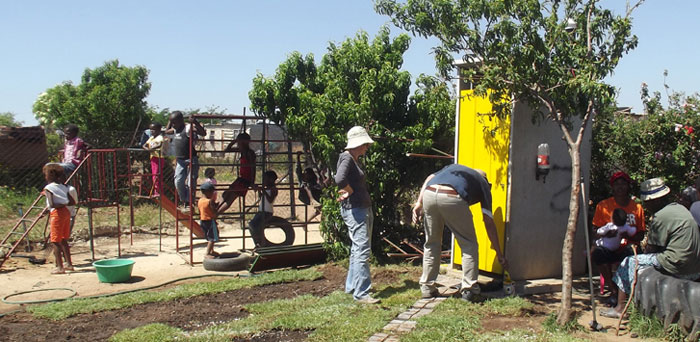Theme: Colour (week 1)
Aims:
- To teach the children about colours: red, yellow, blue, orange, purple and green
- To encourage the children to talk in rings
- To help the children feel happy at school and excited about learning new things
Teachers must prepare the theme table on the Friday afternoon before the week begins.
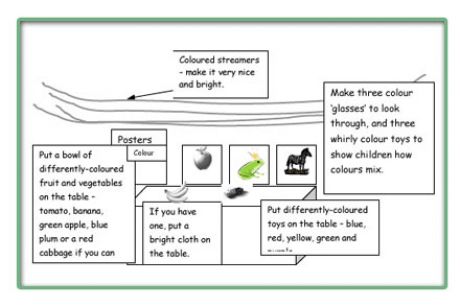
Suggested stories and books for this theme:
Fiction
Elmer, David McKee, Andersen Press
Elmer and the wind, David McKee, Andersen Press
Kensani’s Kite, Alanna Deall, Mike Jacklyn Knowledge Unlimeted
Rosie and the Yellow Ribbon, Paula de Paolo et al, Little, Brown and co.
Care Bears: the day nobody wanted to share, Nancy Parent et al, Scholastic
Zella, Zack and Zodiac, Bill Peet, Human and Rousseau
Noddy: The Rainbow Chaser, based on Enid Blyton's Noddy books, Harper Collins
Non-fiction
What Colour is Camouflage?, Carolyn Otto et al, Harper Collins
Colour, Henry Pluckrose, Watts Books
Rainbow Colours, Ladybird
Making colour whirlies
What you need:
- cardboard (from a cereal box, for example)
- paper
- crayons
- three pencils or sticks
How to make a colour whirly
- Cut out a circle as big as you can on a piece of paper. Put a plate on the paper and draw around it to get a nice circle
- Stick it onto a piece of card
- Make three and then colour one red and yellow, one blue and red, one blue and yellow
- Poke a pencil through the middle of each
- When you turn the circle very fast around the pencil the colour ‘mixes’ and red and yellow turns orange, yellow and blue turns green, blue and red turns purple
Show the children what to do and let them build their own during free play, whenever they want to.
Making colour "glasses"
When the children look through these the world changes colour! The children will be learning while they are having fun. Place these on the theme table so that children can look through them whenever they want to.
What you need:
- cardboard (from a cereal box, for example)
- coloured, transparent plastic
- a stapler or strong glue
How to make colour "glasses":
- Cut out two pieces of card that are large enough to cover the eye area of a child
- Cut two eye holes in the cardboard
- Stick see through coloured plastic between the two pieces of card and use a stapler to fasten it together
- Make at least three of these: one red, one blue and one yellow
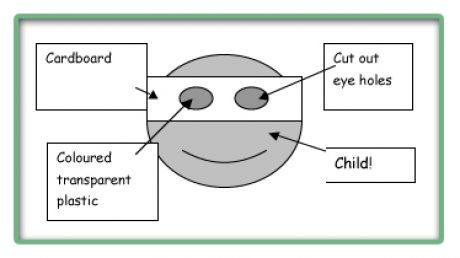
Nature table
If you have models of chameleons, put them on the table.
Chameleons change colour depending on what they are sitting on. This is so that they cannot be seen by the insects they want to catch and eat.
Encourage children to look for insects in the garden, to see if their colour camouflages them from their enemies or if their colours help them to hide and spring out and catch other insects (like the preying mantis).
Don’t let them hurt the insects. It is a way of teaching that other creatures and humans have rights and feelings too.
Interest/discovery table
You can run this activity outside. You will need three plastic bottles, a few see-through plastic cups and red, yellow and blue food colouring.
Fill three plastic bottles with water (for smaller children, use smaller bottles – five-year-olds will manage two litre coke bottles).
Bottles that can also be used are bottles like the kind Game comes in. The children will then be able to squeeze out the water and it may be easier for them to control how much liquid comes out. Add yellow food colouring to one, red food colouring to another and blue to another.
Provide small see-through plastic cups. Let the children pour the different colours into the cups to see what colours they can make. Leave the children to experiment with this on their own.
If they have smallish mixing cups, the coloured water won’t get used up too fast – but if you make them too small, then they might tip over or the children may fill them too fast by mistake.
IMPORTANT:
- Don’t forget to put out the water, sand and outdoor toys as soon as you get to the school in the morning
- Check the playground is clean and safe
- Make sure the playroom is ready for the children
- Lay out the art activities after breakfast if you did not do it on the afternoon before or on Friday afternoon
- Prepare and set out the art activities.
- Make sure you know what to do for all the rings
- You will be introducing the children to the colour red on Monday so try to wear something red to match!
